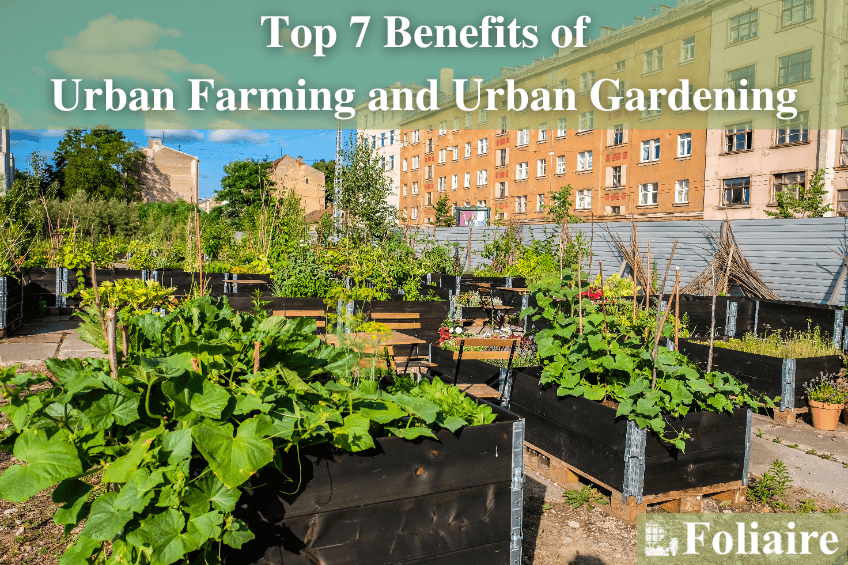The Ultimate Guide To City Blooming
The Ultimate Guide To City Blooming
Blog Article
The Basic Principles Of City Blooming
Table of ContentsThe Ultimate Guide To City BloomingNot known Facts About City BloomingThe smart Trick of City Blooming That Nobody is DiscussingThe smart Trick of City Blooming That Nobody is DiscussingThe smart Trick of City Blooming That Nobody is Discussing
Intrigued in growing food for sale in the City of Chicago? Below is a list of often asked inquiries relating to the guidelines and guidelines that farmers ought to think about when planning a metropolitan agriculture task.
The zoning modification does not change any various other codes taking care of composting, building licenses, purchasing or renting City owned building, company licenses or environmental contamination. There are existing codes that control these issues and they stay in full impact and may be appropriate to your job. Area gardens are normally possessed or handled by public entities, public organizations or community-based companies and preserved by volunteers.
Urban farms grow food that is meant to be offered, either on a not-for-profit or for-profit basis. As a result of their industrial objective, metropolitan farms need a service certificate. Yes. A community yard is permitted to market surplus produce that was expanded on website if the sales are accessory or subordinate to the yard's main objective defined above.
Fascination About City Blooming
Composting is permitted however just for plant material that is created and made use of on site. The amount of garden compost product can not exceed 25 cubic lawns at any provided time according to the criteria in 7-28-715 of the City's Municipal Code. Yes. Due to the fact that the dirt at many brand-new garden sites requires modifying, compost, dirt, timber chips, or various other materials can be obtained to build or enhance the growing space - fruit and vegtables.

If a structure authorization is called for then the hoophouse will be taken into consideration an accessory structure. You can figure out even more about the building authorization demands by speaking to the Department of Buildings. The 25,000-square-foot dimension limit is meant to stop a solitary area garden from dominating a given block or interfering with the block's existing household or commercial character.
The restriction does not relate to gardens found in Public Open Space (POS) areas. Can there be more than one area yard that is 25,000 square feet on a solitary block? Yes. The dimension limit relates to specific gardens, not to specific blocks. No. Fencing is not called for, nevertheless, gardens that have big parking lot may be needed to set up fence or other landscaping attributes.
City Blooming - The Facts
B1 & B2 districts require that all business use tasks be conducted indoors. R districts restrict industrial activity. The regulations mirror the function and intent of the Zoning Code. Is fence needed for metropolitan ranches? Yes. Fences may be called for, in addition to landscape design and testing, for sure car parking locations and exterior work or storage areas depending on location and the particular activity occurring.
Urban farms call for structure licenses and zoning approvals prior to building and construction (City gardening). Various other types of city testimonial may be required depending on details structures, tasks, size, landscape design, licensing, public heath and stormwater administration concerns.
Yes. The kind of permit is established by what is occurring at the website. The Division of Business Matters and Consumer Defense can assist identify the details type of service certificate that's called for. Yes. Off street parking is needed for the majority of commercial jobs in Chicago. The called for number of auto parking spaces is based upon the number of workers servicing site and not the square video of the growing room.
The Single Strategy To Use For City Blooming

A city ranch can sell compost material created on website, nonetheless, the operation has to abide with the policies in 7-28-715 of the Chicago Municipal Code. Aquaponic systems are permitted indoors on city ranches in lots of zoning areas.
Up to five hives or swarms of honey may be maintained as an accessory use. Nevertheless, beekeepers must register with the Illinois Department of Agriculture. For additional information regarding the suggested zoning amendment you might speak to the Division of Real Estate and Economic Growth, Bureau of Preparation and Zoning at 312.744.8563.
Farming in cities and city locations A city ranch in Chicago. Urban farming describes numerous methods of cultivating. https://www.twitch.tv/cityblooming/about, processing, and dispersing food in urban areas. The term additionally uses to the location activities of animal husbandry, aquaculture, beekeeping, and gardening in a metropolitan context. Urban agriculture is differentiated from peri-urban agriculture, which happens in backwoods beside suburban areas.
Some Of City Blooming
, who look for to create social networks started on a common values of nature and neighborhood holism. These networks can establish by method of formal institutional assistance, ending up being incorporated right into regional community planning as a "shift community" movement for sustainable metropolitan development.
The more direct accessibility to fresh vegetable, fruit, and meat items that may be understood with urban agriculture can improve food security a fantastic read and food security while decreasing food miles, leading to reduced greenhouse gas emissions, thus adding to environment adjustment mitigation. A few of the first evidence of urban agriculture comes from Mesopotamia.
Report this page